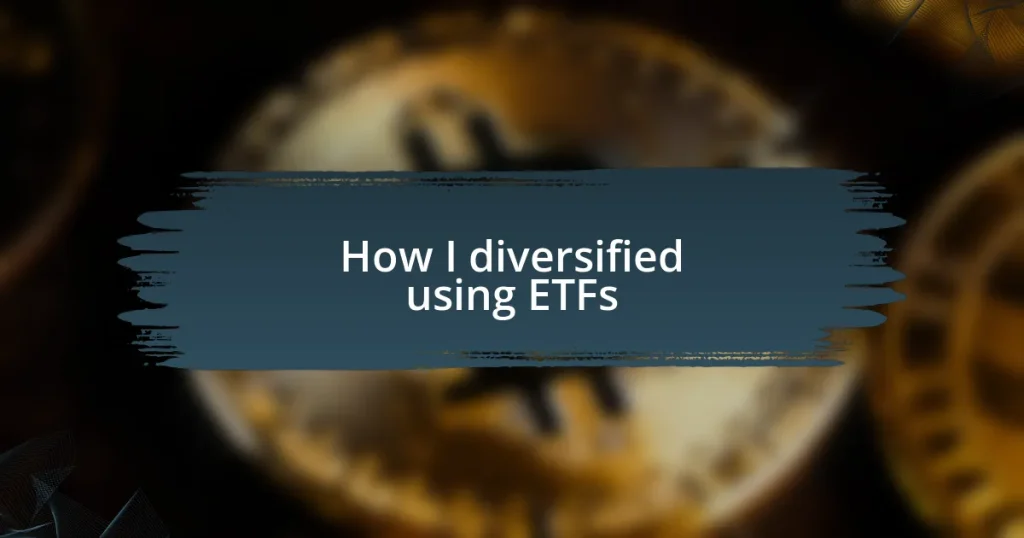Key takeaways:
- ETFs offer liquidity and diversification, allowing for flexible trading and exposure to multiple assets, which mitigates risks.
- Types of ETFs include sector, international, and bond ETFs, each serving different investment strategies and risk profiles.
- Key factors for evaluating ETFs include expense ratios, trading fees, and tracking error to ensure smart investment choices.
- Common mistakes in ETF investing involve chasing performance, neglecting due diligence, and failing to account for total ownership costs.
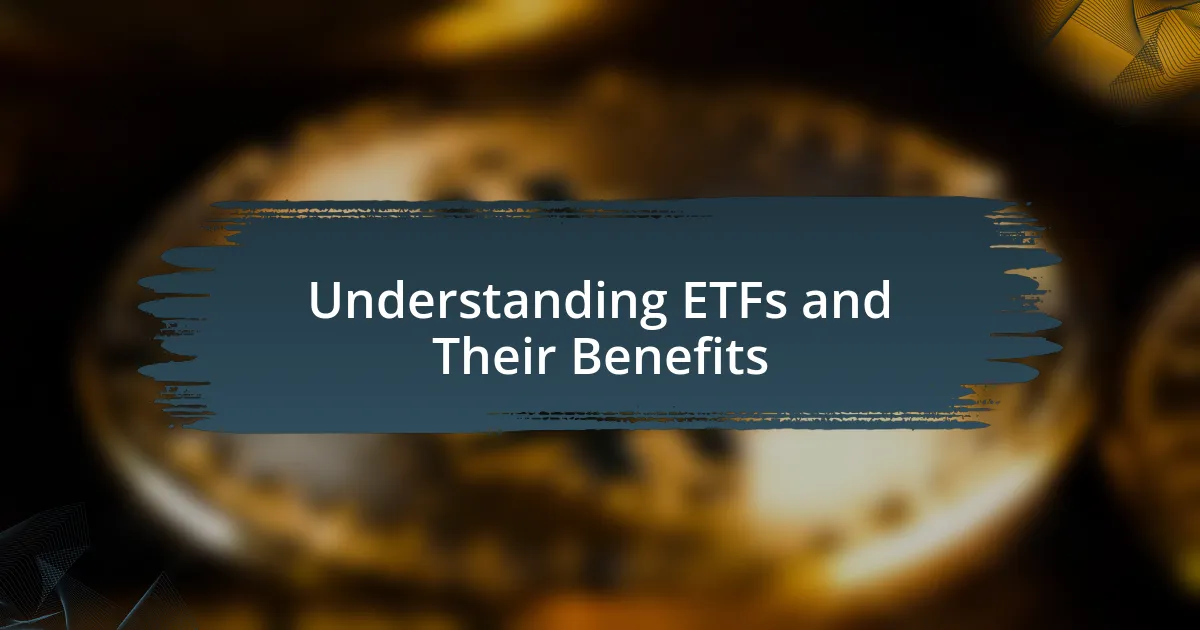
Understanding ETFs and Their Benefits
Exchange-Traded Funds, or ETFs, have become a staple in many investors’ portfolios. I remember when I first discovered them; the idea of owning a slice of multiple companies at once was thrilling. It made investing feel more accessible, as if I were sharing in the potential growth of an entire sector rather than just one stock.
One of the standout benefits of ETFs is their liquidity. Unlike mutual funds, which can only be traded at the end of the trading day, ETFs can be bought and sold throughout the day like individual stocks. This flexibility allows me to react swiftly to market changes, which can be crucial during volatile periods. Have you ever found yourself wishing you could just jump in or out of an investment quickly? With ETFs, that’s part of the deal.
Additionally, the diversification offered by ETFs is phenomenal. By investing in an ETF, you’re often getting exposure to a wide range of assets, which can significantly mitigate risks. When I was starting my investment journey, the thought of putting my eggs in many different baskets eased my anxiety about market fluctuations. It was comforting to know that while one sector might be down, others could offset those losses. Isn’t the peace of mind of diversification worth considering?
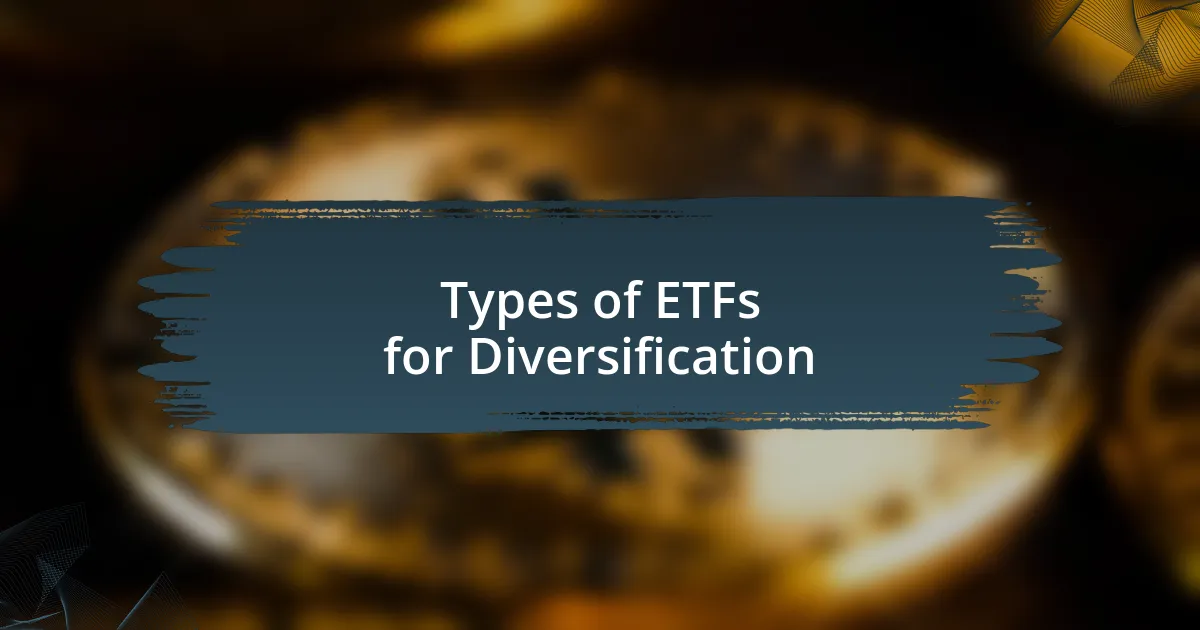
Types of ETFs for Diversification
Investing in ETFs can take many forms, and understanding the various types is essential for effective diversification. For instance, I recall choosing sector ETFs when I wanted exposure to the technology industry. It was exhilarating to see my investment spread across major tech leaders, mitigating risks associated with a single stock while capitalizing on the sector’s growth potential. The beauty of sector ETFs lies in their ability to capture the essence of an industry without needing to pick individual winners.
Another intriguing option is international ETFs, which allowed me to explore global markets. I remember my first international investment, where I gained access to emerging markets that were thriving. It was an eye-opener to realize how diversifying geographically could buffer my portfolio against domestic volatility. Geographic diversification opened new doors and added layers of resilience to my overall investment strategy.
Lastly, bond ETFs have played a pivotal role in balancing my risk profile. In times of uncertainty, I found that adding bond ETFs softened the blow of stock market dips. They served as my safety net, ensuring that I had stability even when equities experienced turbulence. This mix of equity and fixed income in my ETF portfolio gave me confidence to weather various market conditions.
| Type of ETF | Characteristics |
|---|---|
| Sector ETFs | Focus on specific industries (e.g., technology, healthcare). |
| International ETFs | Provide exposure to foreign markets. |
| Bond ETFs | Invest in fixed-income securities to stabilize portfolios. |
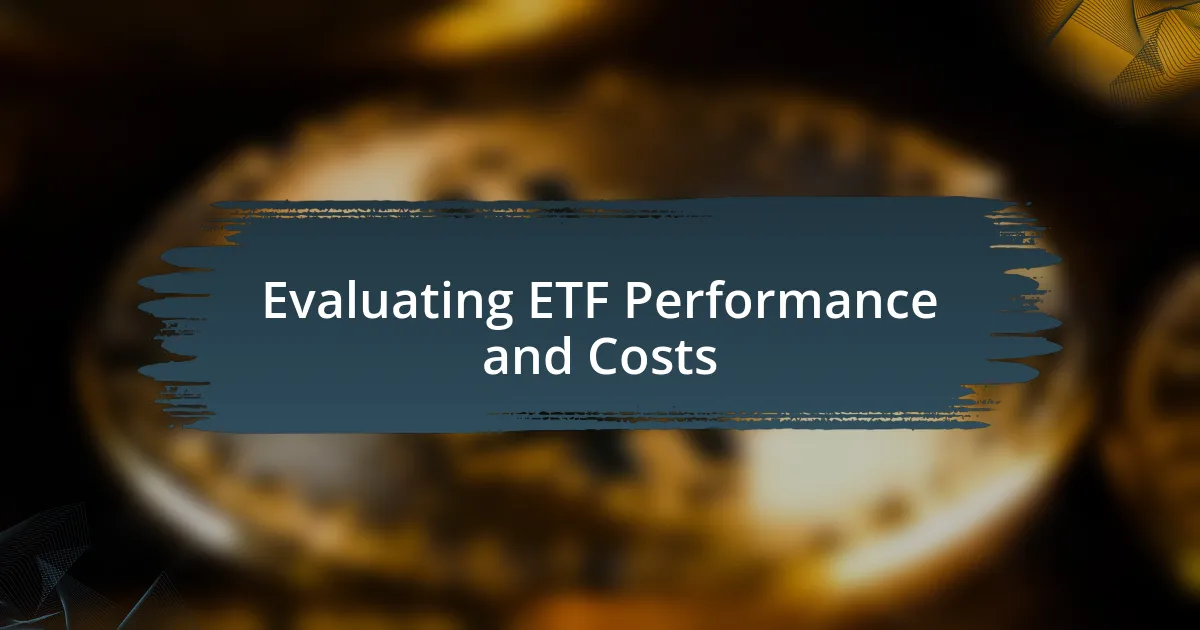
Evaluating ETF Performance and Costs
Evaluating the performance of ETFs goes beyond just looking at the numbers. I remember the first time I reviewed an ETF’s performance; I focused on both its historical returns and its tracking error. The tracking error measures how closely an ETF follows its benchmark index, and I learned that a smaller tracking error often indicates better management. Understanding these factors wasn’t just technical—it felt empowering to see my investments performing as expected.
When weighing costs, I strive to examine various aspects, which can significantly impact long-term returns. Here are a few key considerations:
- Expense Ratio: This annual fee, expressed as a percentage of your investment, covers fund operating costs. I aim for low expense ratios to maximize my returns.
- Trading Fees: I always check if my brokerage applies commissions for ETF trades—a small fee can add up over time.
- Bid-Ask Spread: The difference between the buying price and the selling price can affect profitability, so I tend to invest in ETFs with narrower spreads, especially during market hours.
- Tax Efficiency: Some ETFs are more tax-efficient than others, which can be a major benefit in the long run, especially for taxable accounts.
By keeping these factors in mind, I feel more confident in my investment choices and how they fit into my overall strategy.
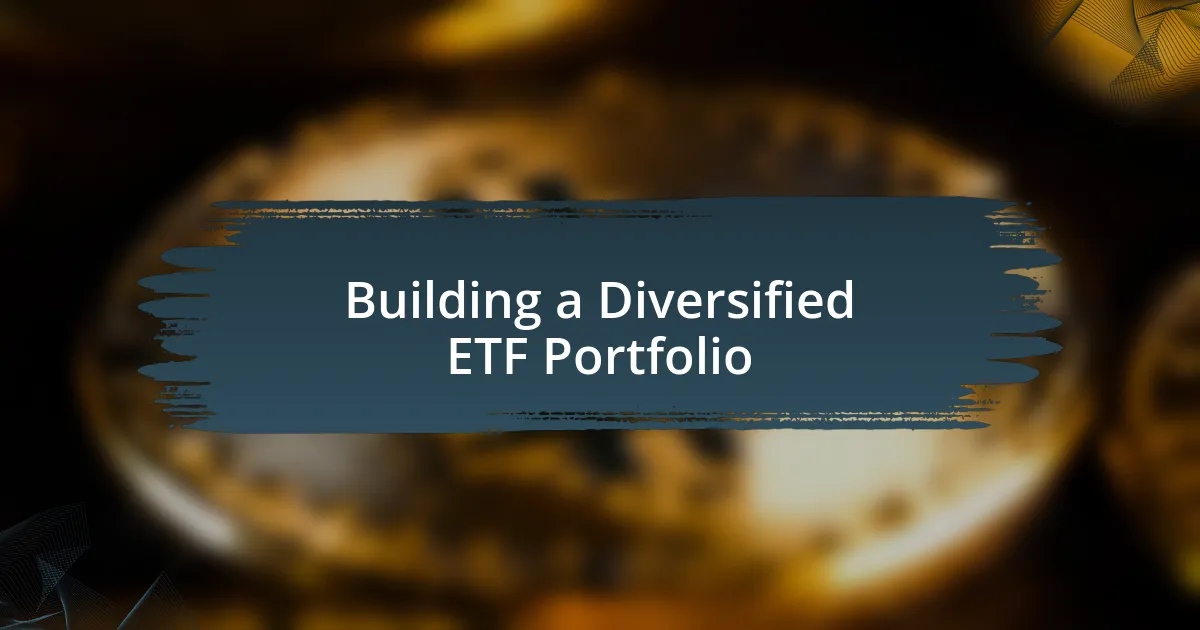
Building a Diversified ETF Portfolio
Creating a diversified ETF portfolio requires a strategic approach that I have found to be effective over the years. I started by identifying different sectors that interest me and have long-term growth potential, such as technology, healthcare, and renewable energy. By spreading my investments across these sectors, I not only mitigate risk but also tap into the unique growth stories each sector presents.
I remember feeling a wave of relief when I realized I could invest in international markets without the hassle of picking individual stocks. By including international ETFs, I added geographical diversity to my portfolio, which opened up new opportunities for growth that I wouldn’t have accessed otherwise. It’s like having a personal safety net; knowing that my investments are not solely dependent on one country’s economy gives me added peace of mind.
Furthermore, I make sure to regularly rebalance my portfolio to maintain my desired asset allocation. This practice keeps me aligned with my investment goals and helps me make informed decisions based on market fluctuations. Have you ever felt overwhelmed about when to buy or sell? I once hesitated to act during a market downturn, but I learned that staying proactive and informed can turn potential setbacks into new opportunities.
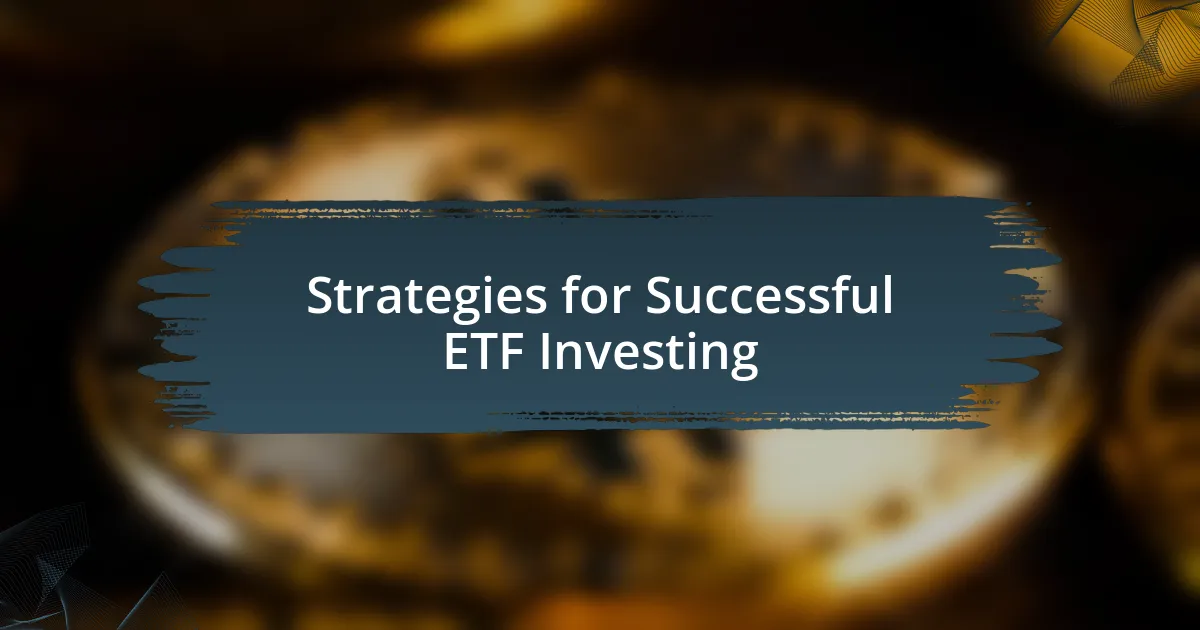
Strategies for Successful ETF Investing
When considering strategies for successful ETF investing, it’s essential to focus on understanding the underlying assets. For instance, I vividly recall my initial foray into sector ETFs; I invested heavily in technology, only to realize later I overlooked some emerging sectors. By continuously educating myself about different asset classes, I not only made more informed investment choices, but I also increased my confidence in navigating diverse market conditions.
Another strategy that has paid off for me is dollar-cost averaging. This approach means consistently investing a set amount of money, regardless of market conditions. I once started this method during a market dip, and the relief washed over me when I saw how many more shares I could purchase at a lower price. Have you ever wished there was a way to take the emotional highs and lows out of investing? By sticking to a regular investment schedule, I minimized the anxiety that comes from trying to time the market.
Lastly, I prioritize conducting thorough research before jumping into any ETF. I recall skimming over one particular fund because I was drawn to its past performance, only to discover later that its management had changed, which altered its strategy. Digging into an ETF’s expense ratios, historical performance, and the companies it holds is crucial. What’s the point of investing if you don’t know what you’re getting into? This diligence has saved me from potentially costly mistakes and has helped me build a more resilient portfolio.
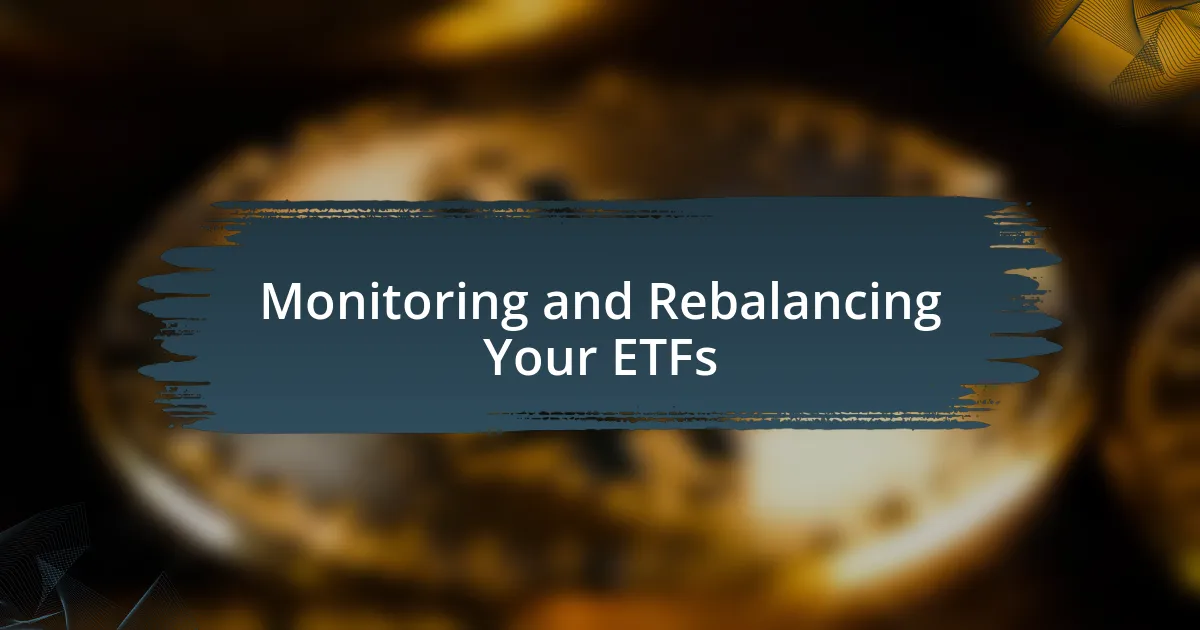
Monitoring and Rebalancing Your ETFs
Keeping a close eye on my ETFs is something I consider essential to maintaining a healthy portfolio. I check into my investments at least quarterly, often asking myself, “Are my assets still aligned with my financial goals?” I’ve learned that market conditions can shift rapidly, and my investments should reflect those changes. For instance, during a recent market downturn, I noticed a significant dip in a sector I was heavily invested in and realized it was time to reassess.
Rebalancing is another crucial part of my strategy. It’s not just about monitoring; it’s about taking action when needed. I remember a time when my tech-focused ETFs started to dominate my portfolio. While I once enjoyed this concentration, I understood that it became a double-edged sword. By rebalancing and redistributing my assets, I could mitigate risk and enhance diversification. Have you ever felt that twinge of anxiety when one sector feels overexposed? Rebalancing can alleviate that weight, shifting it back to a more balanced approach.
The process of rebalancing hasn’t just been about numbers for me; it’s been a journey of understanding my risk tolerance. When markets fluctuate, my emotions tend to follow suit. I once hesitated to sell off a few shares because I was attached to them during their peak. It took some reflection, but I realized that emotionally tethering myself to certain ETFs could cloud my judgment. Now, I view my portfolio with a clearer lens, focusing on long-term success rather than fleeting sentiment.
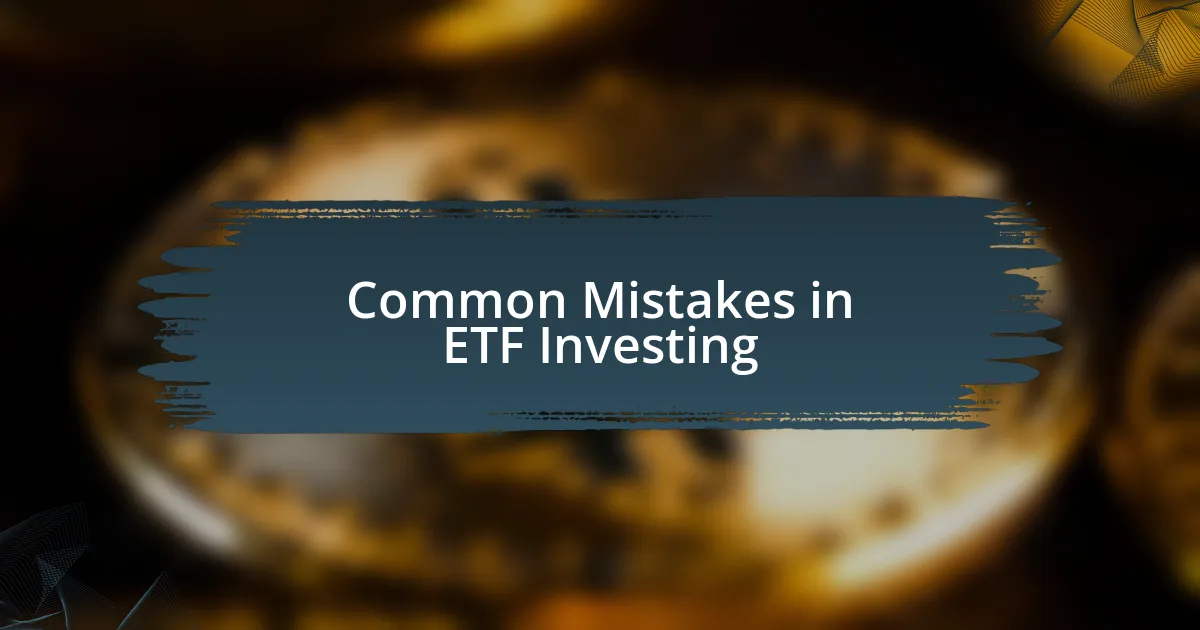
Common Mistakes in ETF Investing
One common mistake I’ve seen many investors make is chasing performance. It’s tempting to jump into an ETF that’s recently skyrocketed, but my experience has taught me that past performance isn’t always indicative of future results. I remember once investing in a popular fund the moment it peaked, thinking I was making a smart move. Instead, I watched my investment decline, leaving me questioning my judgment. Have you ever found yourself in a similar predicament, swayed by the excitement of a rising star?
Another misstep is neglecting due diligence on the ETF’s underlying assets. Early on, I encountered a situation where I invested in an ETF without fully understanding what it held. The fund had hidden exposure to a volatile sector that I wasn’t personally comfortable with. I learned that examining the composition of the ETF can save you from unpleasant surprises. It makes me wonder—how often do we overlook the details that can significantly impact our investments?
Lastly, I find that failing to consider the total cost of owning an ETF can lead to reduced profits over time. Initially, I focused solely on the expense ratio, thinking that was the end of it. However, I quickly realized trading fees and tax implications can chip away at returns. It’s a valuable lesson to remember that what appears to be a low-cost ETF may not remain so after accounting for all these factors. Have you ever scrutinized an ETF’s fees and wondered if you were really getting the best deal?











